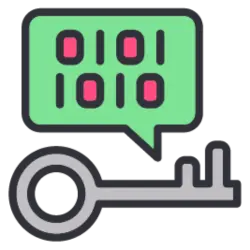The average business loses up to 5% of its annual revenue to fraud. [1]GRFCPA. “ACFE Study Finds Median Losses from Occupational Fraud Increasing.” Accessed May 16th, 2025. While this estimate may read as shocking to some, it merely scratches the surface of fraud’s
real impact on businesses.
Financial fraud isn’t the only challenge that high-risk businesses face. They must also navigate the complexities of compliance issues, chargebacks, and operational risks. In this context, a risk management framework is essential to a business’s success.
What exactly is a risk management framework, or RMF? Below, we’ll provide a detailed guide that discusses the key components of an RMF, some popular RMFs, and best practices for implementing RMF strategies.
Key Takeaways
- A risk management framework is essential for running a successful business, regardless of size or industry.
- Risk management doesn’t just encompass cybersecurity—it also extends to financial, operational, and reputational risks.
- As the nature of risk evolves, risk management should evolve alongside it.
What Is a Business Risk Management Framework (RMF)?

A business risk management framework is a standardized, thoughtfully structured system composed of carefully defined guidelines and practices. Its purpose is to assist organizations in effectively managing risk by identifying, measuring, prioritizing, mitigating, and monitoring potential sources of risk.
Identifying assorted risk factors requires no shortage of hard work and strategy. When implemented correctly, an RMF, though it cannot eliminate risk entirely, assists organizations in responding to threats in a streamlined manner. There are also different varieties of risk management frameworks, which are tailored to the respective needs of specific businesses. For example, eCommerce businesses may be more vulnerable to cyberattacks, while retail merchants are more likely to encounter theft-related issues and damaged inventory.
Why Are Risk Management Frameworks Important?
Implementing a framework for risk management is beneficial for several reasons, including:
- Proactive Identification and Resolution of Risks: A functional RMF allows your business to identify risks before they escalate into full-blown crises. In being proactive, merchants can respond to potential disruptions with strategic interventions.
- Regulatory Compliance: Ideally, an RMF can help your organization achieve compliance in a highly regulated industry.
- Enhanced Financial Stability: Minimizing risk means reducing costs associated with fraud.
- Better Decision-Making: With an RMF, merchants can distinguish between high and low-impact threats. Additionally, an RMF can be helpful when making calculated choices, such as entering a new market or launching a new product.
Popular Risk Management Frameworks
Not all risk management frameworks are created equal. While they all serve essentially the same function (mitigating and identifying risk so businesses may protect themselves from it), there is enough variety across the RMF spectrum to warrant a deeper discussion.
Merchants need not create a business risk management framework from scratch. There are several examples of go-to risk management frameworks that can help your organization control exposure efficiently. These include:

NIST Risk Management Framework
This framework, which was initially designed for U.S. federal agencies, provides guidelines for managing cybersecurity risks. It outlines the requirements for establishing risk management systems in alignment with the Federal Information Security Modernization Act (FISMA). The NIST framework comprises six key steps:
- Categorize
- Select
- Implement
- Assess
- Authorize
- Monitor

ISO 31000
Unlike other frameworks, ISO 31000 is not tied to one specific industry. This framework provides a structured approach to help organizations embed risk awareness and decision-making into operations. When utilized strategically, the ISO 31000 can help mitigate potential risks.

Control Objectives for Information and Related Technology (COBIT 5)
While initially developed for financial auditors, COBIT 5 has undergone enough modifications to cater to organizations across various industries. This framework lets merchants oversee and regulate IT-related procedures, assets, and operations while assisting with compliance and risk-related challenges.

Factor Analysis of Information Risk (FAIR)
FAIR helps your IT team assess cybersecurity risks in particular. Since FAIR is quantitative by nature, it provides a common language for communicating organizational risks.

Operationally Critical Threat, Asset, and Vulnerability Evaluation (OCTAVE)
Developed in 1999 by the Software Engineering Institute (SEI) of Carnegie Mellon, OCTAVE allows organizations to identify key information related to assets and potential exposures. Certain healthcare organizations aiming to comply with HIPAA regulations usually adopt OCTAVE as their in-house framework, as it helps them systematically identify vulnerabilities in their electronic health record (EHR) platforms.

Threat Assessment and Remediation Analysis (TARA)
TARA provides a framework for identifying and evaluating cybersecurity weaknesses using three components;
- The Threat Agent Library (TAL): Lists the most common threat agents your systems may be exposed to.
- The Methods and Objectives Library (MOL): Defines tactics that threat agents commonly use to attack systems.
- The Common Exposure Library (CEL): A repository of established information regarding exposures and vulnerabilities.

FISMA Approach
The Federal Information Security Modernization Act (FISMA) regulates how government institutions authorize and enforce certain security measures. Non-government organizations sometimes adopt this approach to protect their information assets and systems. The FISMA approach involves several steps, including choosing, implementing, and overseeing efficient security controls. [2]CISA. “Federal Information Security Modernization Act.” Accessed May 16th, 2025.

COSO Enterprise Risk Management Framework
This framework is comprised of four main categories: operations, strategy, compliance, and reporting. COSO helps organizations prioritize risk management by aligning risk with an acute and well-defined organizational strategy.
Key Components of an RMF
Most business risk management frameworks usually consist of five basic steps, including:
- Risk Identification: This is the first and most crucial step of this process. It primarily involves pinpointing internal and external risks. Remember, risks can run the gamut from financial to reputational and beyond. Merchants are encouraged to document all identified risks as part of this procedure.
- Risk Assessment and Analysis: You’ve identified the risks. Now, it’s time to assess and analyze them. A comprehensive assessment and analysis allow merchants to leverage both qualitative and quantitative methods to prioritize risk.
- Risk Mitigation Strategies: Once you determine the severity of each identified risk, you can develop strategies to manage or reduce it. During this phase, it’s best to have timelines in place.
- Monitoring and Review: You’ve implemented mitigation strategies. Now, you must determine whether or not they are effective. Merchants are encouraged to continuously monitor emerging risks to curb volatility.
- Governance and Compliance: This last step involves aligning your risk management efforts with your organization’s goals. By doing this, you clarify your organization’s purpose and stay within compliance guidelines.
Best Practices for RMF Implementation
Here are several things to consider when implementing RMF:
Leadership Buy-In and Resource Allocation: The correct form of risk management leadership sets the tone for your entire organization. Your risk management processes could be ineffective without human and financial support.
Developing a Risk-Aware Culture: Promoting a culture of risk mitigation is essential to proactively reducing risk.
Setting Up Risk Management Policies: Establish policies that define risk, escalation protocols, and control expectations.
Integration with Organizational Processes: Your business risk management framework should seamlessly integrate with broader operational workflows and align with your organizational and risk-management objectives.
Continuous Improvement and Updates: Since risk isn’t static, your RMF should evolve with time. Merchants must conduct periodic reviews and audits to gauge the efficacy of their controls, which may or may not need to be adjusted accordingly.
Training and Communication: Employees contribute to an organization’s risk factors for better or worse. For instance, security breaches and compliance failures sometimes stem from simple human errors. As such, you must ensure that your employees understand how they contribute to risk and how they can reduce it. Conducting formal training is one way to address this issue.
Leveraging Technology and Tools: Risk management is an ongoing process. While you can try to conduct it manually, this process can be time-consuming and overwhelming. Adopting the right technology, such as automation tools, can help you streamline risk protection practices.
Overcoming Common Implementation Challenges: Some of the solutions to common challenges in implementing risk management include educating upper management on the importance of risk management, assessing the culture of the company, and getting employee feedback on the process. [3]LinkedIn. “Problems and Solutions in the Implementation of Risk Management.” Accessed May 16th, 2025.
Strengthen Your Risk Management Strategy With PaymentCloud

You need a robust risk management framework to help you handle any obstacles in your path. Financial risk is as critical a factor for business owners as cybersecurity and reputational risk. One way to ensure you circumvent all these forms of risk is by finding a way to accept safe payment methods.
As a trusted merchant services provider, PaymentCloud offers more than secure payment processing. It provides a layer of protection through advanced fraud prevention tools, secure API integrations, and a rolling reserve that cushions against chargebacks and volatility. PaymentCloud doesn’t just process your payments — it helps future-proof your business against financial threats. Why wait any longer? Secure your payments today.
FAQs About Frameworks for Risk Management
What are the 5 steps in the risk management framework?
Generally, most risk management frameworks follow five common steps: risk identification, evaluation and analysis, risk mitigation, monitoring, and governance and compliance. Merchants must follow all five steps to ensure the most secure and risk-averse management framework.
How to build a risk management framework?
Creating a risk management framework involves numerous steps. The first consists of defining the framework scope you intend to use. The next step involves securing reliable leadership support and building your framework from there. This part of the process may involve the identification and assessment of various risks, developing mitigation strategies, and integrating your framework into existing business structures.





